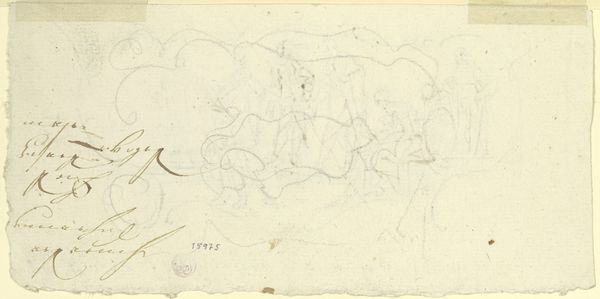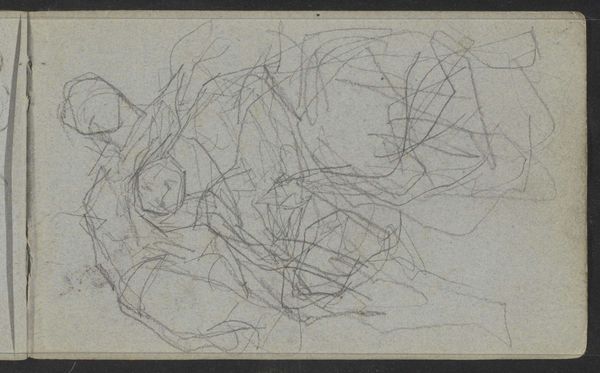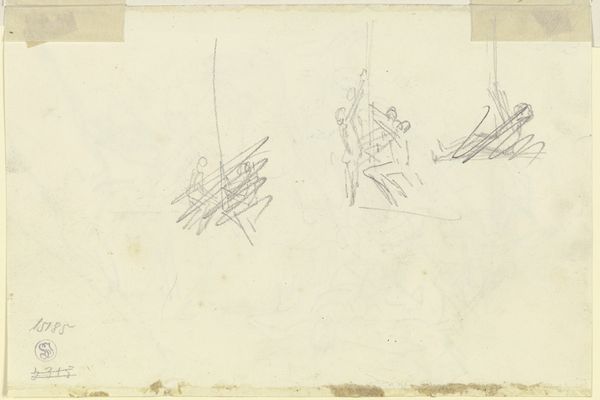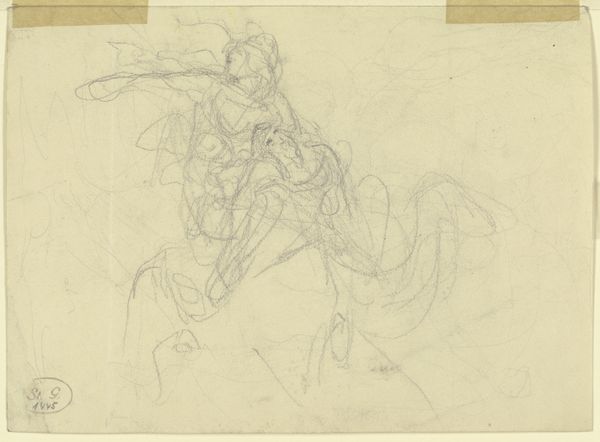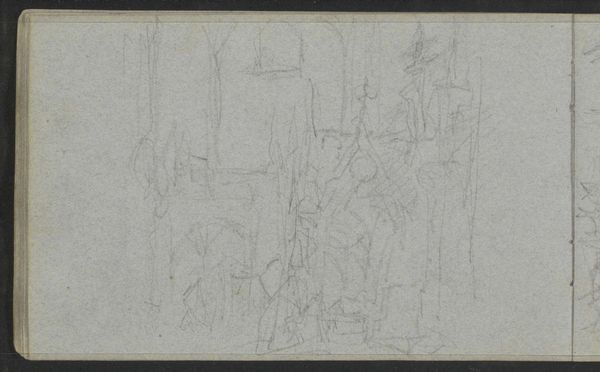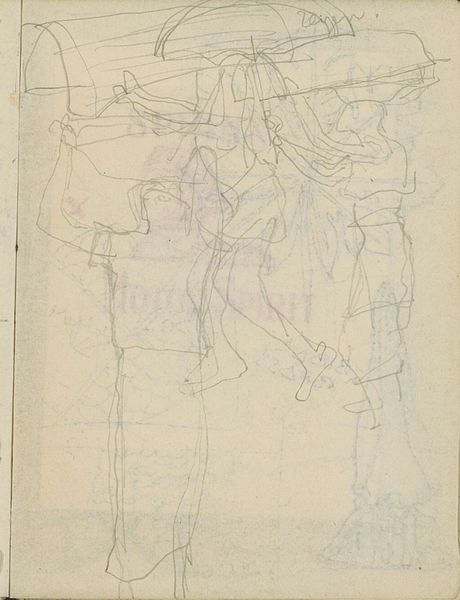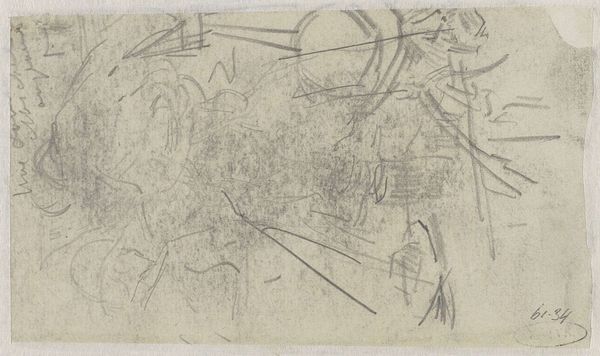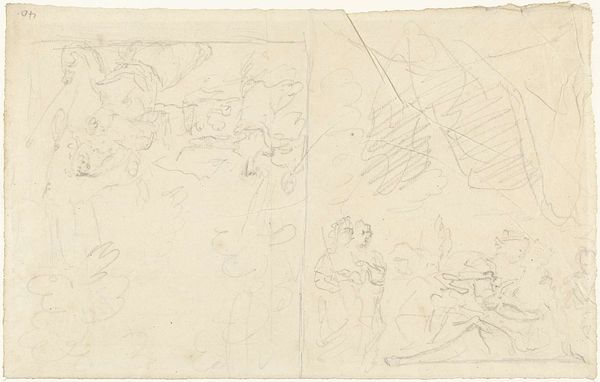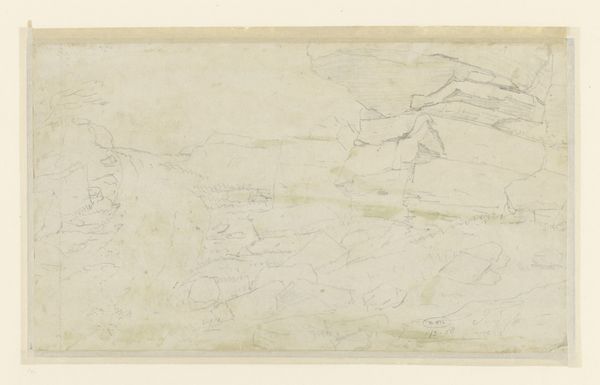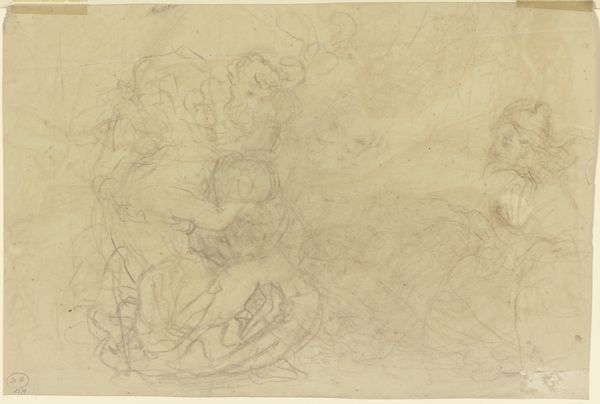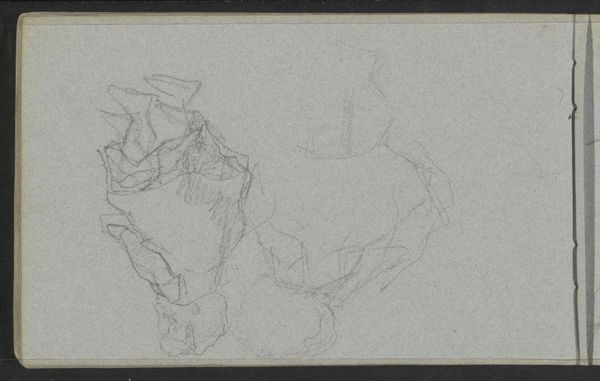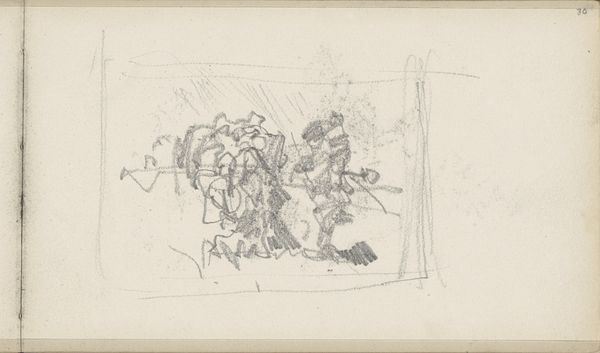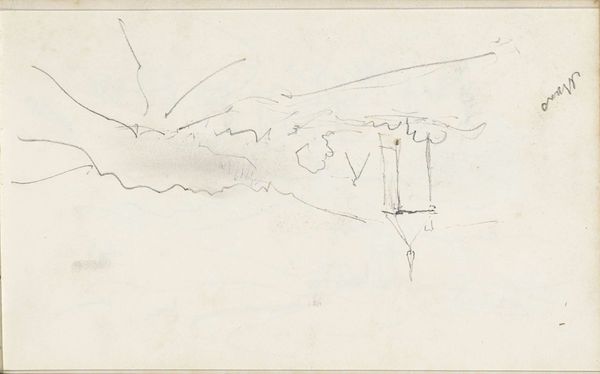
drawing, graphite
#
drawing
#
baroque
#
landscape
#
figuration
#
15_18th-century
#
graphite
#
rococo
Copyright: Public Domain
Editor: This is Paul Egell's "Uninterpreted Scene," a graphite drawing from around 1748, currently held at the Städel Museum. The preliminary lines and undefined forms create a sense of ambiguity. How do you approach interpreting this kind of work? Curator: Focusing purely on the formal aspects, observe the dynamism suggested by the gestural lines. The composition leads the eye across the page, creating a sense of movement despite the static medium. Note the deliberate use of hatching and the varying pressure of the graphite, which imply depth and texture, particularly in what appears to be the figures. Editor: It seems so unfinished. Are the "figures" even intentional? Curator: Regardless of the artist’s intent to portray recognisable figures, the lines coalesce to suggest form. The density of line in certain areas—around the supposed figures—creates visual weight, anchoring the composition. Do you see how these heavier concentrations interact with the sparser areas of the drawing? Editor: I do. It is almost like the contrast in the composition becomes the focus. What appears to be supports on either side add visual punctuation marks, like a very long stage. Curator: Precisely. The vertical strokes offer a counterpoint to the implied horizontal narrative. This interplay is critical to understanding the visual architecture of the piece, irrespective of any presumed subject matter. The formal qualities generate the aesthetic effect; they dictate how we perceive the whole. Editor: So even without knowing the "story," we can appreciate the piece by analyzing the lines and shapes. I didn't think about landscape or rococo or baroque when I looked at this initially. I've learned to appreciate the interplay of visual elements for their own sake. Curator: Yes, by exploring these principles, you unveil the deeper layers of complexity within the work, revealing much more than is visible at first glance.
Comments
No comments
Be the first to comment and join the conversation on the ultimate creative platform.
